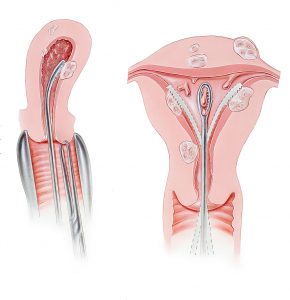Gynecology

How to Prepare to Annual Gynecological Exam
There are several steps that females should take to be prepared before a gynecological exam:
– Take an appointment between menstrual periods. Menstrual blood can interfere with the exam as well as lab tests.
– No vaginal intercourse or insert anything into the vagina, including douches or vaginal products, for at least 24 hours before the visit. Sex may irritate the vaginal tissue and increase the chance of incorrect Pap test results.
– Prepare a list of questions for your gynecologist prior to the appointment. Your gynecologist needs to know about any discharge, irregular vaginal bleeding, odor or pain.
– The gynecologist will ask about your last menstrual period started and how long your periods usually last.

D&C (Dilatation and curettage) refers to the widening of the uterine cervix with Hegar dilators and surgical removal of part of the lining of the uterus or contents of the uterus. It is a gynecological procedure as well as the most often used method of first trimester miscarriage or abortion.
Most common we use suction curettage procedures of manual or electric vacuum aspiration.
Tissue removed from uterine cavity is examined for completeness( in the case of abortion or miscarriage treatment) or by pathology for abnormalities.

Terminating of pregnancy during the early weeks of gestation. We can perform medical abortion when we have ultrasound confirmed uterine, non-ectopic pregnancy and when we have accurate pregnancy dating.
Pharmaceutical abortion may be preferred:
– if it is the woman’s preference.
– in very early gestation; up to 7 weeks of gestation.
– if the woman is severely obese (BMI greater than 30) but does not have other cardiovascular risk factors.
– if the woman has fibroid uterus or uterine malformation.
– if the woman wants to avoid a surgical intervention.
Surgical abortion may be preferred:
– if she has contraindication for medical abortion.
– if she requests concurrent IUD insertion.
– if she has leave the country or no time for follow-up needed to confirm that abortion is complete.

Under spinal anesthesia inspection of the uterine cavity by hysteroscope (endoscope) with access through the cervix. It allows for the diagnosis of intrauterine pathology and serves as a method for surgical intervention (operative hysteroscopy).
Hysteroscopy useful for:
– Intrauterine adhesions
– Endometrial polyp
– Adenomyosis
– Submucosal firoids
– Uterine malformations
– Removal of embedded IUDs
– In selected cases removal of retained products of conception

